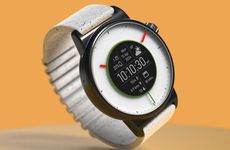In common spaces, there are a handful of high-touch surfaces, including elevator buttons, and STUCK Design is introducing a vision for a contactless future with Kinetic Touchless. The touchless elevator button design does not rely on physical connection between a finger and a button, as it uses motion to indicate the desired response. Since people are hard-wired to want to press buttons, this design satisfies the desire to perform a familiar response in a new, safe way.
With Kinetic Touchless, people can hover over selections (such as floor numbers) and make a pushing motion to input their desired destination. In this way, STUCK Design explains that "Kinetic Touchless capitalizes on the flexibility of contactless interactions while maintaining the tactility of contact interactions."
Touchless Elevator Buttons
STUCK Design's Kinetic Touchless Uses Motion to Indicate a Response
Trend Themes
1. Touchless Buttons - Creating touchless buttons that use motion to indicate the desired response presents an opportunity to reduce contact in public spaces.
2. Contactless Interactions - Providing contactless interactions with the benefits of touch actions can create a new, safe way to use everyday devices.
3. Gesture Recognition - Building devices that use gesture recognition can improve safety and reduce contact in public spaces and create new interfaces with a variety of devices.
Industry Implications
1. Elevators and Escalators - Implementing touchless elevator buttons is a transformative innovation opportunity for the elevator and escalator industry to reduce human contact in a space where it is necessary to have it.
2. Public Space Design - Touchless interfaces and gesture recognition technologies can be incorporated into public spaces to reduce contact, improve safety, and create new interactive experiences
3. Input Devices - The introduction of touchless buttons creates new opportunities to incorporate gesture recognition into input devices like touchscreens, trackpads and mice.


